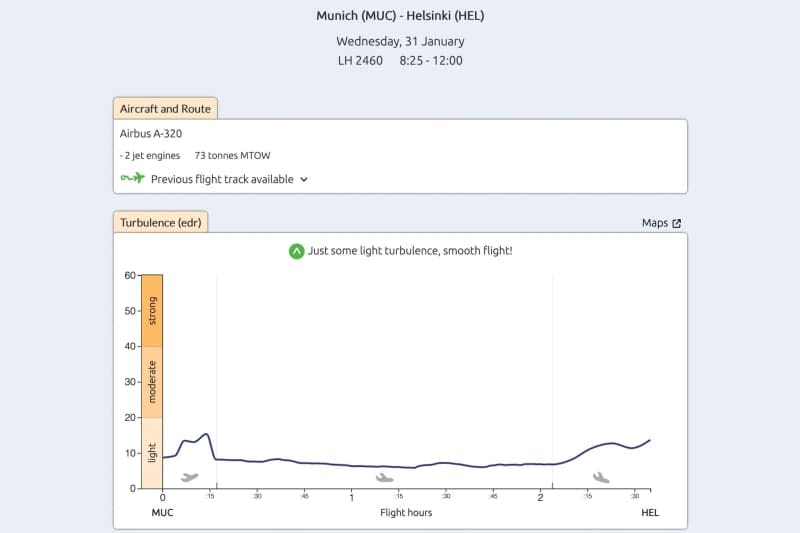Is my flight going be turbulent? This website gives you the forecast

"The captain has switched on the 'fasten seatbelt' sign." If the sheer thought of turbulence is triggering panic and nausea in you, then one website might help calm your nerves before a flight.
Turbli.com offers a kind of weather forecast for airplane turbulence: You enter your departure and destination airports and see how rough the flight is likely to be.
The website, which is completely free, gives you a graph of the flight's predicted turbulence from take-off to landing, while also giving a forecast of any delays that headwinds might cause.
The site has a map of turbulence around the world and where they occur depending on altitude. According to the website's operator, fluid mechanics engineer Ignacio Gallego-Marcos, the forecasts are based on weather models from the US weather agency NOAA and the UK's Met Office weather service.
Turbli.com also publishes an annual ranking of the most turbulent flight routes.
Top 5 most turbulent flights worldwide
Santiago de Chile - Santa Cruz (Bolivia)
Almaty (Kazakhstan) - Bishkek (Kyrgyzstan)
Lanzhou (China) - Chengdu (China)
Nagoya (Japan) - Sendai (Japan)
Milan (Italy) - Geneva (Switzerland)
Top 5 most turbulent flights in Europe
Milan (Italy) - Geneva (Switzerland)
Milan (Italy) - Zurich (Switzerland)
Geneva (Switzerland) - Zurich (Switzerland)
Marseille (France) - Zurich (Switzerland)
Ljubljana (Slovenia) - Zurich (Switzerland)
The ranking is based on the average turbulence on the routes at respective average cruising altitudes, independent of the aircraft types. Some 150,000 flights were analysed for the 2023 ranking.
Experts say that for people with a fear of flying, it is often a good idea to have a window to look out during the flight. Seeing the horizon can help limit any nausea, since your eyes will have a point of reference in the distance.
It also helps to sit near the middle of the plane, where you feel the least movement. The aircraft shakes the least at the point where the wings are attached to the fuselage.
In addition, for passengers seated near the middle, the plane does not seem to swerve as much when the captain turns the plane.
On the other hand, the rear of the aircraft tends to be the roughest place. A passenger at the very back may feel more pronounced changes when the pilot uses the vertical stabilizers or rudder. A seat at the back is also less than ideal during takeoff.


